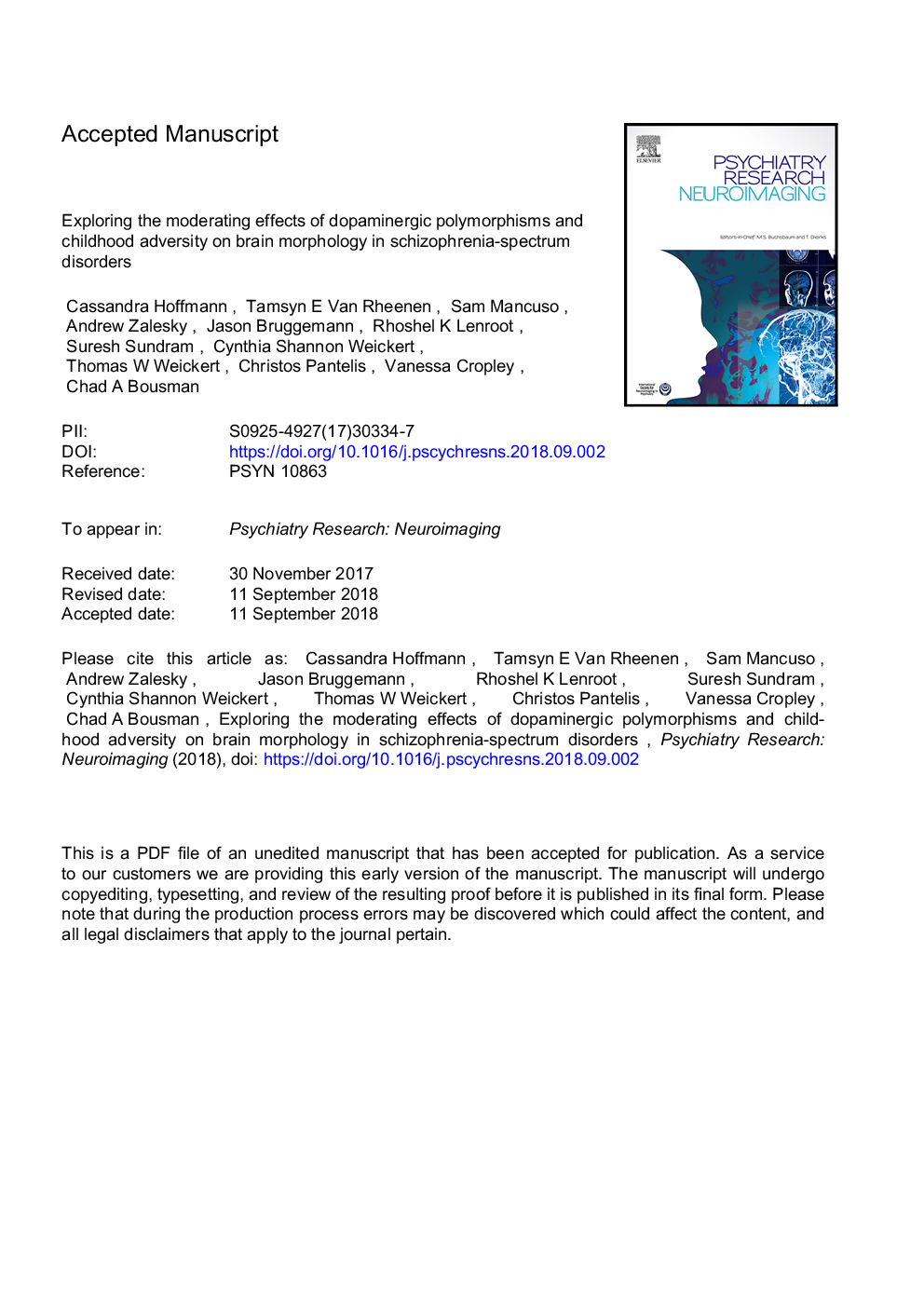| Article ID | Journal | Published Year | Pages | File Type |
|---|---|---|---|---|
| 11028154 | Psychiatry Research: Neuroimaging | 2018 | 23 Pages |
Abstract
Genetic and environmental etiologies may contribute to schizophrenia and its associated neurobiological profile. We examined the interaction between dopaminergic polymorphisms, childhood adversity and diagnosis (schizophrenia/schizoaffective disorder) on dopamine-related brain structures. Childhood adversity histories and structural MRI data were obtained from 249 (153 schizophrenia/schizoaffective, 96 controls) participants registered in the Australian Schizophrenia Research Bank. Polymorphisms in DRD2 and COMT were genotyped and a dopaminergic risk allelic load (RAL) was calculated. Regression analysis was used to test the main and interaction effects of RAL, childhood adversity and diagnosis on volumes of dopamine-related brain structures (caudate, putamen, nucleus accumbens, dorsolateral prefrontal cortex and hippocampus). A schizophrenia/schizoaffective diagnosis showed significant main effects on bilateral hippocampus, left dorsolateral prefrontal cortex and bilateral putamen volumes. RAL showed a significant main effect on left putamen volumes. Furthermore, across the whole sample, a significant two-way interaction between dopaminergic RAL and childhood adversity was found for left putamen volumes. No brain structure volumes were predicted by a three-way interaction that included diagnosis. Our finding suggests the left putamen may be particularly sensitive to dopaminergic gene-environment interactions regardless of diagnosis. However, larger studies are needed to assess whether these interactions are more or less pronounced in those with schizophrenia/schizoaffective disorders.
Related Topics
Life Sciences
Neuroscience
Biological Psychiatry
Authors
Cassandra Hoffmann, Tamsyn E. Van Rheenen, Serafino G. Mancuso, Andrew Zalesky, Jason Bruggemann, Rhoshel K. Lenroot, Suresh Sundram, Cynthia Shannon Weickert, Thomas W. Weickert, Christos Pantelis, Vanessa Cropley, Chad A. Bousman,
